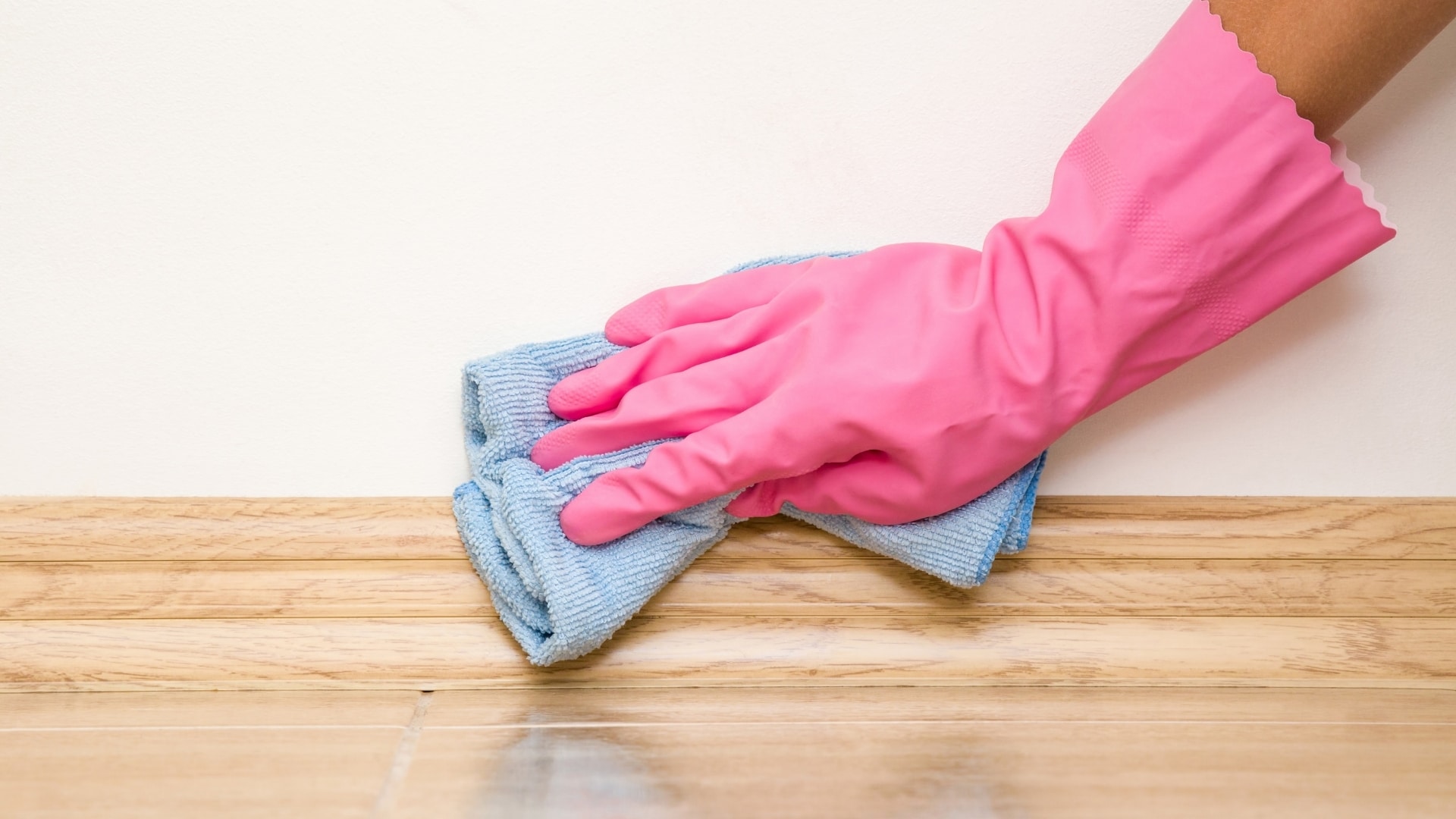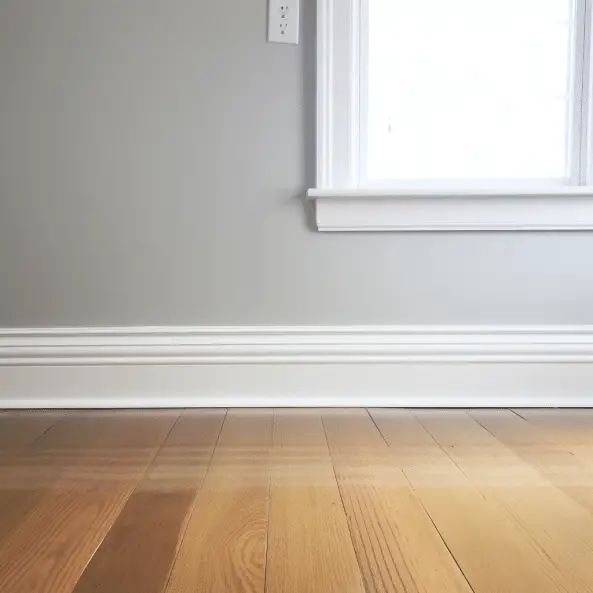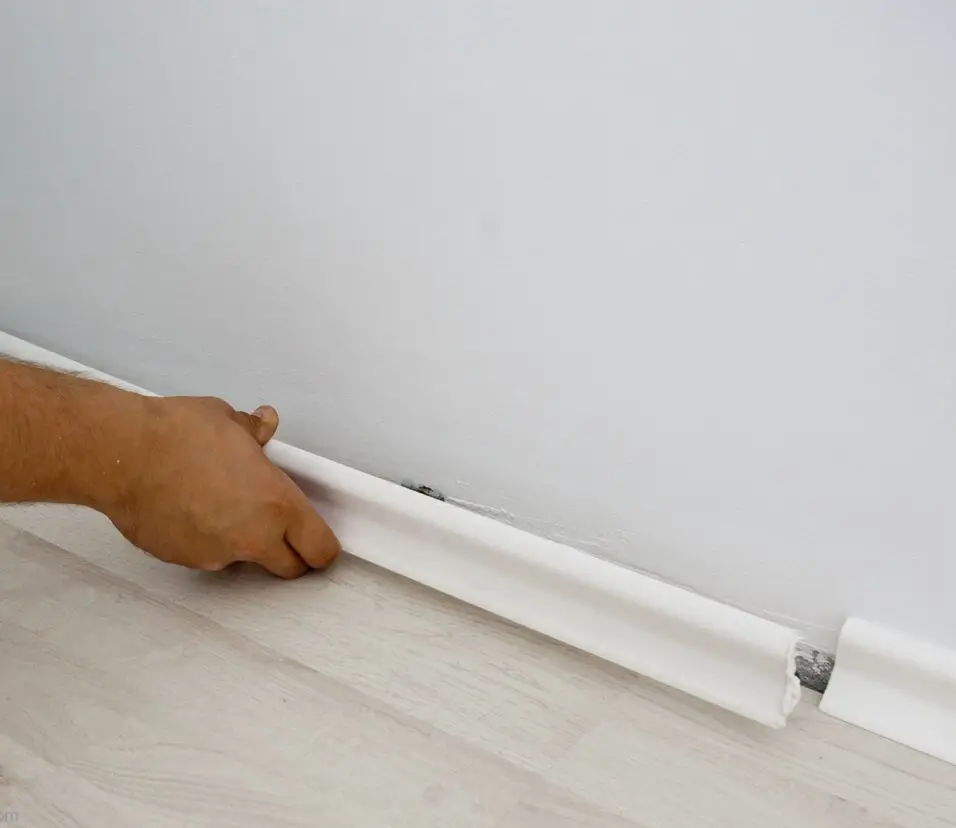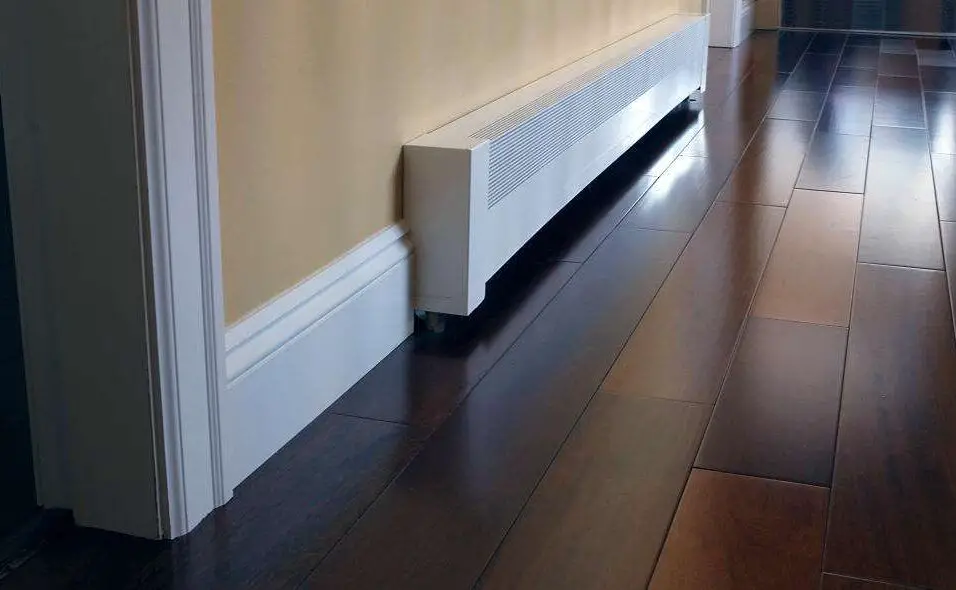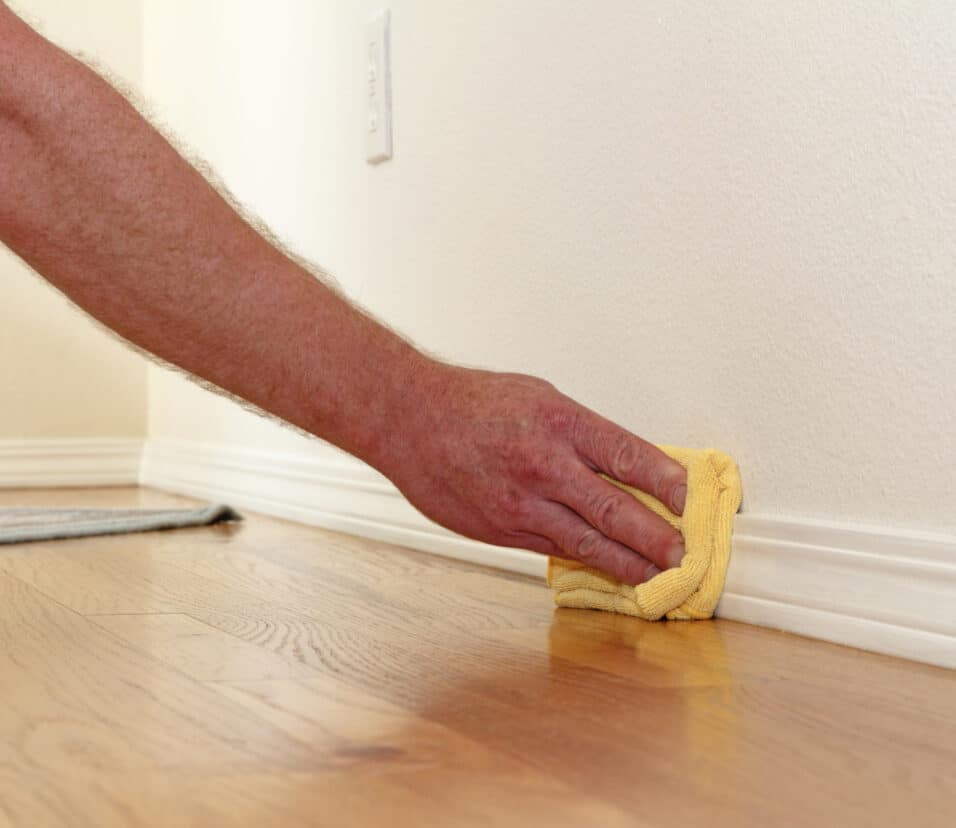How To Clean Baseboards Easily
Introduction
How To Clean Baseboards Easily: Whether you’re a seasoned cleaner or a beginner looking to improve your home maintenance skills, our easy-to-follow instructions will help you achieve remarkable results with minimal effort. First, we’ll explore the importance of regular baseboard cleaning and the benefits it brings to your home. Not only will clean baseboards enhance the overall appearance of your rooms, but they also prevent the spread of dust and allergens, making your living space healthier and more comfortable for you and your family.
Next, we’ll delve into the essential preparation steps before you start cleaning. We’ll discuss the necessary tools and materials, which are likely already available in your cleaning arsenal. From microfiber cloths to a trusty vacuum cleaner, you’ll learn how to assemble everything you measure baseboard need for a seamless cleaning process. Once the preparation is complete, we’ll guide you through various cleaning methods, including both dry and wet techniques. You’ll discover how to effectively remove dust and grime without damaging your baseboards or leaving behind unsightly streaks.
Moreover, we’ll share some expert tips on tackling stubborn stains or scuff marks that may have accumulated over time. You’ll be amazed at how a few simple household items can transform your baseboards and restore them to their original glory. Don’t be! Our guide will also cover the best approaches to clean baseboards in tricky corners and tight spaces, leaving no nook untouched.

How do you clean really dirty baseboards?
Dip a microfiber cloth or gentle sponge into your soapy water and wring out excess moisture. Then, take your damp cloth or sponge and gently scrub the baseboards as you move down the wall. Make sure your sponge isn’t too wet, as a dripping sponge can bring moisture damage to your baseboard or surrounding floor.
For particularly stubborn stains or scuff marks, create a paste using a mixture of baking soda and water. Apply the paste directly to the stained areas and let it sit for a few minutes. Then, use the old toothbrush or small scrub brush to gently scrub the stains away. Rinse the area with a damp cloth afterward.
If your baseboards are lightly soiled, you can use a dry cleaning method. Simply take a microfiber cloth or a soft sponge and wipe down the baseboards to remove dust and surface dirt. Work your way around the room, paying special attention to corners and edges.
For more deeply ingrained dirt, opt for the wet cleaning method. Fill a bucket with warm water and add a few drops of mild dish soap or a gentle all-purpose cleaner. For extra cleaning power, you can also mix in a small amount of white vinegar. Dampen a microfiber cloth or sponge in the solution and wring out excess water to avoid soaking the baseboards.
Starting at one end of the baseboard, wipe it down with the damp cloth or sponge, moving in a horizontal motion. Continue along the length of the baseboard until the entire surface is cleaned. For higher areas or taller baseboards, use a step ladder to ensure you can reach all areas safely.
After cleaning, use soft towels or dry cloths to gently dry the baseboards to prevent water damage. Ensure there is no excess moisture left behind. Take a final inspection to spot any missed spots or stains and address them accordingly.
Can I clean baseboards with water?
Bust Baseboard Dust
Go over them with a vacuum brush attachment or a stiff broom to blast the first layer of dust. Next, wipe them clean with a mixture of warm water and a splash of vinegar. Follow up by drying them off with a clean cloth, then swipe them with a dryer sheet, which will reduce dust in the future.
Gather the necessary materials, such as a bucket of warm water and a clean microfiber cloth or sponge. You may also want to have a dry cloth or towel on hand for drying.
Before using water, start by dry dusting the baseboards to remove any loose debris or surface dirt. You can use a microfiber cloth, a duster, or a vacuum cleaner with a brush attachment for this initial step.
Dampen the microfiber cloth or sponge with warm water. Wring out any excess water to avoid over-saturating the baseboards, especially if they are made of wood or have a delicate finish.
Gently wipe down the baseboards with the damp cloth or sponge, starting from one end and moving in a horizontal motion. Work your way along the entire length of the baseboard, being careful not to drip water onto the floor.
For tougher stains or marks, you can apply a bit of gentle all-purpose cleaner to the damp cloth. Make sure the cleaner is safe for the baseboard material. Test it on a small inconspicuous area first to avoid any potential damage.
Why do baseboards get so dirty?
The areas by stairs and doorways are usually top culprits. Eventually dust that clings to your walls falls, where it collects at your baseboards instead. So to get your baseboards really clean, you need to deal with the dust hanging around above them. You can wash your walls with a simple soap and water solution.
Floor Dust and Debris: Baseboards are located at the bottom of walls, making them susceptible to dust and debris that settle on the floor. As people walk around, dust, pet hair, and other particles are stirred up and eventually settle on the baseboards.
High-Traffic Areas: Baseboards in high-traffic areas, such as hallways, entryways, and frequently used rooms, are more likely to accumulate dirt. Constant foot traffic can lead to scuff marks, shoe prints, and other marks on the baseboards.
Pets: If you have pets in your home, their fur and dander can contribute to the dirt buildup on baseboards. Pets may also rub against the baseboards, leaving behind oils and marks.
Air Circulation: Air circulation in a room can carry dust and particles towards the baseboards. The airflow created by heating and cooling systems can also contribute to the accumulation of dirt on baseboards.
Poor Sealing: Gaps between the baseboards and the floor or walls can allow dirt and debris to accumulate in hard-to-reach areas. Additionally, unsealed baseboards can absorb spills and stains, making them more challenging to clean.
Neglect during Cleaning: Baseboards are often overlooked during regular cleaning routines. If not cleaned regularly, dirt can build up over time, making the cleaning process more challenging when you finally address it.
Is it important to clean baseboards?
It is important to have clean baseboards in your home, because dirty baseboards can affect the overall look of a room. Clean baseboards give the illusion of a cleaner home, so it is recommended that homeowners clean baseboards at least once per month to retain a tidy look.
Enhances the Appearance of Your Home: Clean baseboards contribute to a polished and well-cared-for appearance of your home. When baseboards are neglected and covered in dirt, they can make an otherwise clean room look unkempt and neglected.
Prevents Dust Accumulation: Baseboards are positioned near the floor, which tends to be a dust-prone area. Regularly cleaning baseboards helps to remove dust, pet hair, and other debris, preventing it from spreading around your home and reducing allergens in the air.
Maintains Indoor Air Quality: Dust and dirt on baseboards can be easily stirred up by movement or airflow, leading to poor indoor air quality. Regular cleaning of baseboards can help minimize airborne particles, creating a healthier living environment for you and your family.
Prolongs the Lifespan of Baseboards: Proper maintenance and cleaning can extend the lifespan of your baseboards. Dirt and grime buildup can degrade the quality of the materials over time, leading to the need for premature replacement or repairs.
Prevents Stains and Discoloration: Baseboards are prone to staining, especially if they are located near areas like the kitchen or entryway. Regular cleaning can help prevent stubborn stains and discoloration, preserving the original look of the baseboards.
Can you clean baseboards with soap and water?
Overall, it’s safest to use soap and water on your baseboards before trying other solutions. If you’re working with wood-stained boards, opt for soap and water or cleaners made specifically for wood-stains (more on that below).
Gather the necessary materials, including a bucket of warm water, a mild dish soap or a gentle all-purpose cleaner, a clean microfiber cloth or soft sponge, and a dry cloth or towel for drying.
Before using the soap and water solution, begin by dry dusting the baseboards to remove loose debris and surface dust. You can use a microfiber cloth, a duster, or a vacuum cleaner with a brush attachment for this initial step.
Fill a bucket with warm water and add a small amount of mild dish soap or a gentle all-purpose cleaner. Be sure to follow the product’s instructions regarding the appropriate dilution ratio.
Dip a clean microfiber cloth or soft sponge into the soap solution and wring out any excess water. The cloth or sponge should be damp but not dripping wet.
Starting at one end of the baseboard, gently wipe it down with the damp cloth or sponge, moving in a horizontal motion. Continue along the entire length of the baseboard until the entire surface is cleaned.
For more stubborn stains or marks, apply a bit of the soap solution directly to the affected area. Let it sit for a few minutes to help break down the stain, and then use the damp cloth or sponge to gently scrub the stain away.
How do you clean baseboards naturally?
All you need is a handful of Magic Erasers and a bucket of warm water. If you’re working on painted baseboards, add dish soap. If you have stained wood baseboards, add distilled white vinegar. Dip your eraser into the bucket, wring it out, and wipe down the baseboards.
Gather the necessary materials, including a bucket of warm water, white vinegar, baking soda, a clean microfiber cloth or soft sponge, and a dry cloth or towel for drying.
Before starting with the natural cleaning solution, begin by dry dusting the baseboards to remove loose debris and surface dust. Use a microfiber cloth, a duster, or a vacuum cleaner with a brush attachment for this initial step.
Mix equal parts of white vinegar and warm water in a bucket. The acidic properties of vinegar make it an effective natural cleaner that helps break down dirt and grease.
Dip a clean microfiber cloth or soft sponge into the vinegar and water solution. Wring out any excess liquid to avoid over-saturating the baseboards.
Starting at one end of the baseboard, gently wipe it down with the damp cloth or sponge, moving in a horizontal motion. Continue along the entire length of the baseboard until the entire surface is cleaned.
For tougher stains or marks, sprinkle a small amount of baking soda directly on the affected area. Then, use the damp cloth or sponge to gently scrub the stain away. The natural abrasiveness of baking soda helps to lift stubborn stains without damaging the baseboard’s finish.
After cleaning, use a dry cloth or towel to gently wipe down the baseboards and remove any remaining moisture. Properly drying the baseboards is essential to prevent water damage, especially for wooden or painted baseboards.
Can you clean baseboards with mop?
Much like the broom, a floor mop is an easy tool for cleaning your baseboards! This floor mop method can be as simple as grabbing a bucket of soapy water and using your mop directly on the baseboards. Also, if you’re willing to try something a little different, you could use a solution made with vinegar.
Select a mop with a flat and broad cleaning surface, such as a microfiber mop or a mop with removable cleaning pads. Avoid using string mops or mops with harsh bristles, as they may damage the baseboard finish.
Before using the mop, dry dust the baseboards to remove loose debris and surface dust. You can use a microfiber cloth or a duster for this initial step.
Lightly dampen the mop’s cleaning pad with warm water. Ensure the mop is not soaking wet, as excessive water can damage the baseboards, especially if they are made of wood or have a delicate finish.
Starting at one end of the baseboard, gently run the damp mop along the length of the baseboard, moving in a horizontal motion. Apply gentle pressure as needed to remove dirt and grime.
For tougher stains or marks, you can spray a mild all-purpose cleaner or a vinegar and water solution on the baseboards before running the mop over the area. Allow the cleaner to sit for a few minutes to help break down the stain.
After cleaning, use a dry microfiber cloth or a dry mop pad to gently wipe down the baseboards and remove any remaining moisture. Properly drying the baseboards is essential to prevent water damage and promote a streak-free finish.
How much vinegar and water to clean baseboards?
Vinyl baseboards: Mix an eco-friendly cleaning solution of one gallon of warm water, four tablespoons of dish soap, and four tablespoons of white vinegar—a mixture that may also work as a DIY floor cleaner recipe. Then, use a dishwashing sponge, microfiber cloth, rag, or even a sock to scrub the baseboards.
Measure an equal amount of white vinegar and warm water. The recommended ratio is typically 1:1, which means you’ll mix one cup of vinegar with one cup of warm water. You can adjust the quantities accordingly, depending on the amount of cleaning solution you need.
Pour the measured amount of white vinegar and warm water into a bucket. Gently stir the solution to ensure it is well mixed.
Dip a clean microfiber cloth or soft sponge into the vinegar and water solution. Wring out any excess liquid to avoid over-saturating the baseboards.
Starting at one end of the baseboard, gently wipe it down with the damp cloth or sponge, moving in a horizontal motion. Continue along the entire length of the baseboard until the entire surface is cleaned.
For tougher stains or marks, you can apply a bit of the vinegar and water solution directly to the affected area. Let it sit for a few minutes to help break down the stain, and then use the damp cloth or sponge to gently scrub the stain away.
After cleaning, use a dry cloth or towel to gently wipe down the baseboards and remove any remaining moisture. Properly drying the baseboards is essential to prevent water damage, especially for wooden or painted baseboards.

Conclusion
Regularly cleaning your baseboards not only enhances the overall aesthetics of your home but also contributes to a healthier environment. With dust and allergens removed, you and your family can breathe easier and enjoy a cleaner living space. Remember, preparation is key. Having the right tools and materials readily available streamlines the process and ensures you can tackle the task efficiently. Whether you prefer dry or wet cleaning methods, our guide has equipped you with the knowledge to choose what works best for your baseboards’ condition.
No longer will stubborn stains or scuff marks be a challenge. Armed with some simple household solutions and a bit of elbow grease, you can easily tackle even the most persistent blemishes. Additionally, our guide has covered how to reach those tricky corners and tight spaces, leaving no area untouched. Your baseboards will be immaculate from floor to ceiling.
Lastly, don’t forget the maintenance tips. By incorporating these into your cleaning routine, you can prolong the cleanliness of your baseboards and reduce the frequency of deep cleaning sessions. Cleaning baseboards easily has now become a routine part of your home maintenance. As you maintain your baseboards’ cleanliness, you’ll notice how it contributes to the overall sense of order and cleanliness throughout your living space.



